Julie Fox Henson, violin
John Helmich, violin
Jonathan Sturm, viola
George Work, cello
May 24th, 2022
Belin Quartet Concert Program (May 24th)
A Musical Blessing by Nolan Gasser
(Commissioned by the MercyOne Des Moines Foundation)
A Musical Blessing, for string quartet was composed from April to June 2020, thanks to a commission by the MercyOne Des Moines Foundation, on behalf of the Richard Deming Cancer Center. In discussions with Dr. Deming and Sophia Ahmad (Senior Director of Development at MercyOne) prior to commencing the work, I learned of the principal goals of this commission along with the potential use opportunities for the work when completed. At its core, the work should help provide a healing environment, encourage reflection, and inspire a spirit of unity for its listeners — patients battling cancer, their friends and families, and the Center’s dedicated doctors, nurses, and staff — in a variety of care-based settings and scenarios. A second directive conveyed to me is that the work should embody a range of emotions: from reflective to joyful, with some incorporation of sadness—but where darker moods ultimately resolve to a state of joy and acceptance. Finally, Dr. Deming shared his love of a collection of poems by the Irish priest John O’Donohue — To Bless the Space Between Us: A Book of Blessings, generously sending me a copy of the book. This collection, exploring the psychic and spiritual “geography of change” that each blessing invokes, was so inspirational to the compositional process that I affixed a related title — A Musical Blessing — to the work.
A Musical Blessing is nearly 11 minutes in length, and unveils its musical and spiritual narrative via a modified rondo form — a common formal schema that involves sectional repetition in a symmetrical manner; specifically, this work follows the pattern of A–B–A–C–A–D–B–A, where sections of the same letter utilize at least some common material. Further, each lettered section employs its own bit of “internal” repetition. While many of these repeating formal elements may go unnoticed by a listener, especially during a first hearing, they nevertheless help to define the listening experience—as a unified journey of motion, adventure, and resolution. Given the healing-based priorities of the work, the harmonic palette is largely consonant — anchored on a kind of pan-modality on C — with dissonance and chromaticism employed only periodically for thematic and variety purposes; similarly, the rhythmic approach is largely driving and clearly metric, as duple or triple. These accessible approaches are especially true during the “participatory” section, around three-quarters into the work — as will be discussed below.
On a more consistent level, A Musical Blessing makes use of two musicological techniques that in my research have been empirically correlated with positive health benefits —such as reduced pain, stress, and anxiety. The first is the use of a sustained low note or “pedal” while harmonies (chords or other harmonic “constructs”) change above it. The second is stepwise (up or down) motion in the lowest voice. Both techniques have the ability to focus the mind in narrative and aesthetic ways that can trigger neurotransmitter activity — that in turn can yield those positive benefits. Not surprisingly, those “low notes” usually, though not always, appear in the cello.
Below is a more detailed unwinding of the work’s material and flow. As musicological discussions can be dense, I’d suggest that the reader first listen to the complete work, and then return to this discussion—playing the musical passages (via the timings of the recording) as you read along.
A Musical Blessing begins with two formal elements that re-occur in varied guise throughout the work. The first may be labeled the “blessing gesture” (0:00–0:11), as it musically mimics the hand movements of a religious or spiritual leader offering a blessing; it proceeds in three parts, in the form a–a–b, as a flow of sustained chords, each time ending with a short cut-off. The second element is much shorter, and may be called the “healing motive” (0:12), which repeats immediately and in constant variation thereafter; in its basic form, the motive utilizes the Greek poetic meter of the dactyl — long-short-short—initially as f–e–f in the 1st violin. To be sure, these two nuanced elements may not often consciously register to the listener; and yet in the tradition of composers like Beethoven (e.g., the opening motive of the 5th Symphony), their purpose is less aural than structural: providing the basis for an organic unity that on a deeper level informs the psychological and spiritual experience of the work.
As the work gets underway, the “healing motive” grows and develops (0:12–0:23), rising to an expressive highpoint with a sustained “lyrical phrase” in the 1st violin (0:24–0:29), before shifting into a rhythmically contrasting passage (0:30). The technical term for this rhythmic contrast is “hemiola”, or “3 against 2”, where a triple meter is felt in what is otherwise a duple meter. This creates a kind of playful movement that also embodies a change of focus — especially as the harmony here becomes more complex and chromatic (0:30–0:39). Following the rhythmic disruption, the “healing motive”-based discourse resumes, becoming somewhat darker and more “mysterious” with some tremolo strings (0:52–0:57) leading once again to a triple-feel (hemiola) passage, a variant of the earlier one (0:58–1:07).
As if awakening from a troubling thought, a lighter transition based on the hemiola rhythm (1:08– 1:21) moves us to a new, brighter section — and what may be called the “joyful theme” (1:22– 1:34); this too is seeded by the “healing motive”, and even more is based on the “lyrical phrase” noted above, which indeed immediately follows the “joyful theme”. The second “hemiola” returns as a kind of bookend to this section, which then transitions to what gradually becomes a return to elements of the “blessing gesture”, at first an extension of its third (b) element (1:57– 2:11), and then via transition to a more direct echo to its first appearance, with the third element extended and drawing to a point of articulation (2:25 –2:47).
So far, this analysis has unwound the first three large-scale sections — a symmetrical ternary form of A–B–A — that, from a programmatic standpoint, might suggest an initial encounter with a tough diagnosis: a supportive blessing yields confidence and even occasional joyful optimism, and yet also stress and uncertainty—such that another blessing is needed to prepare for the upcoming fight. Of course, this “program” is not meant to be prescriptive or absolute, as music is always a subjective language open to myriad interpretations.
At this point, a new and vibrant section begins in a lively and syncopated 4/4 meter—with an intro that includes a variant of the sustained chords of the “blessing gesture” (2:48–3:03). We are then introduced to a similarly syncopated “heroic theme” (based on a variant of the “healing motive”) in the 2nd violin against pizzicato in the 1st violin, and then vice-versa (3:04–3:13), after which there begins an extended and animated interaction among all four voices — reminiscent of Goethe’s description of a string quartet as “a conversation among four intelligent people” (3:14– 3:29). This leads to a more rhythmically sustained and somewhat “ethereal harmonic passage”, a series of slowly shifting chords as the cello (with high harmonics occasionally popping out) moves in stepwise decent (3:29–3:43); at the same time, the chords subtly produce a new hemiola — gradually shifting the metric flow from duple to triple.
To wit, the actual meter now changes to a triple-based 9/8, as the cello introduces a somewhat “noble theme” (a triple-meter variant of the “heroic theme”), accompanied in the upper strings with a bouncy flow of staccato chords (3:44–3:51). This “noble theme” is then passed around the ensemble, first to the 1st violin, then to the 2nd, as the mood gets lighter and ever more playful— though soon tinged with a bit of tension (3:52–4:11). The jaunty octave figure introduced in the 1st violin, at first an accompaniment, suddenly grabs the reigns of the narrative in an increasingly unstable passage, as it jumps from voice to voice—as if confidence is being upended (4:12–4:20). Stability seemingly returns with a set of octave unison B-naturals that forcefully lead back to the “noble theme” (4:21–4:26). This time, however, the “noble theme” — now in the 1st violin — is accompanied not with bouncy staccato chords as before, but with aggressive accentsin the lower strings, as if trying to force confidence — a move quickly undermined by darker and more dissonant harmonies (4:27–4:41). At last, the tension gives way to a gradual layering of octave unison (descending, then ascending) lines in all 4 strings, leading back to articulations of the “noble theme”—this time less tense, but still a bit unsettled (4:42–5:00).
That “settled” feeling finally comes with a return of the “ethereal” chord passage and itsstepwise cello line which, like a two-way mirror, now leads us back to the “heroic theme” — once again in duple (4/4) meter (5:01–5:24) — but now even more “heroic” as the melody is in octave unison in the violins. At this juncture, though, it morphs into a rather “playful theme” in the 1st violin as the lower strings bounce around in rhythmic pizzicato (5:25–5:35). But the mood then turns more serious and contemplative as the “playful theme” is varied and extended, as the harmony surrounding it becomes denser and more chromatic (5:36–5:47). The theme continues to fragment and evolve, as the mood becomes yet more contemplative via supporting stepwise tremolo lines in contrary motion in the viola and cello, which lead to a full-tremolo and somewhat anxious suggestion of the “blessing gesture”, leading in turn to a brief silence (5:48–6:06).
The section now begins a gradual wind-down, as the “playful theme” (in the 2nd violin) extends its chromatic trajectory, with teasing echoes in the 1st violin and at times dissonant stepwise lines in the lower strings; the tempo then slows and comes to a stop on held octave G’s (6:07–6:28). At this point, with the tempo now slower and freer (poco rubato), a recitative-like passage picks up that octave G’s, offering two unison octave phrases in all voices, each followed by a hint of the “playful theme” in the 1st violin. The last two notes of that hint, moreover, also points to something we’ve heard before: the opening phrase of the “blessing gesture” (6:29–6:50).
From a programmatic standpoint, the two large-scale sections just reviewed — the extended C and the abbreviated, though unmistakable return of the A section — might suggest a challenging yet committed struggle to overcome this unwelcome illness: a steely heroism, supported by prayer and noble indignation, supports the hero’s battle, although the journey is by no means void of tension or an occasional lack of confidence; further prayer and a new focus gradually makes it clear that a more serious and contemplative approach — buoyed by a welcome blessing — is needed. Again, this is by no means the only interpretation.
In my initial discussions with Ms. Ahmad, an idea was raised for this work: that it could include a section—simple and accessible—during which a listening “participant” (a patient, familymember, etc.) could join along with a recording of the string quartet to add his or her own improvisatory part, but where no musical training was required; for example, this could entail the participant playing the white notes of the piano or a xylophone, etc. From a musicological standpoint, this would suggest a section in a simple and accessible rhythm and a fully diatonic (built on C) harmonic palette. Even prior to starting the work, I knew that he wanted to incorporate this section at around three-quarters through — which happily proved perfectly suited to the work’s narrative as it began to take shape.
This participatory section — section D of the overall form — unveils a demonstrably “meditative” narrative: an easy-tempo section itself divided into a tripartite a–b–a form. After a brief intro (6:51– 7:02), the first “a” sub-section features a simple, lyrical melody in the 1st violin, one whose opening notes derive from the “healing motive”, and which is supported by light and playfully rhythmic chords in the lower strings; as noted, the rhythmic language here is clearly metric, with light syncopation, and the harmonic language is entirely diatonic: a kind of C pan-modality (7:03– 7:43). The shorter “b” sub-section adopts a more “transcendent” quality via slow and undulating tremolo chords, gaining in energy and passion as it proceeds (7:44–8:07). The return of the “a” sub-section is nearly identical to the first, although a tad more tender as the 1st violin melody sounds an octave higher via harmonics (8:08–8:51).
The obvious “program” here is a kind of invitation — either to the patient or to anyone listening — to gather strength and comfort via an aesthetically-induced meditation, whereby the mind and body can be bolstered yet further to take on the vital and difficult fight at hand.
With a short transition out of the D section, the remainder of the musical narrative is derived, though with a good degree of variation, from the B and A sections, respectively — defining the overall form as a modified rondo. Initially, the 1st violin sounds the “joyful theme”, which is then immediately repeated in the 2nd violin, accompanied by playful octave-leaps and a partial canon in the 1st violin — heightening the narrative’s “joyful” spirit (8:52–9:16). The B-section’s recapitulation then proceeds as previously, concluding with the second “hemiola” (9:17– 9:32).
At this point, we suddenly return to the full tripartite (a-a-b) “blessing motive”, although now the 1st violin’s melody is animated with the melodic rhythm of the “joyful theme” in all three subsections — as if the officiant’s movements have become newly infused with joy (9:33–9:44). Indeed, the theme’s opening gesture — derived, again, from the “healing motive” — now informs the launch of a new passage, as the music’s rhythmic and harmonic intensity rises to an ecstatic and fortissimo climax in the full ensemble before lightening back to a simple close on a halfcadence: announcing the work’s final denouement (9:45–10:07).
That denouement amounts to the work’s “Coda” — launched, perhaps not surprisingly, with two iterations of the “joyful theme”, though now mellowed to a serene flow, as defined by a gentle, stepwise movement in the cello (10:08–10:19). This is then followed by a return of the extended final sub-part (b) of the “blessing gesture” — as had occurred at the end of the initial B section (10:20–10:33). Yet, whereas that extended gesture had earlier triggered a new section, this time it heralds the final phrase of the work, which includes two last articulations — quiet and slowing down — of the “joyful theme”, and a final sustained chord (10:34 – 10:50).
From a programmatic standpoint, these concluding sections suggest that our patient, armed with the power of meditation, is now newly energized and optimistic to face the future — despite the challenges; whether it is joy or more a new sense of acceptance and contentment, though, will be a personal assessment. In either event, one final blessing is received with gratitude, and now may well yield even greater optimism. In the end, this is a journey — a battle — that can and will be met, with help from within and without.
Once again, this “program” is not prescriptive, but just one possible narrative; indeed, one may wish to follow Stravinsky’s dictum that “music is, by its very nature, essentially powerless to express anything at all” —other than itself. That said, the abstract power of music does give us license to forge our own interpretation of the musical proceedings.
Nolan Gasser Petaluma, CA (August 10, 2020)
Beethoven String Quartet No. 3 in D Major, Op. 18
I. Allegro
II. Andante con moto
III. Allegro
IV. Presto
Program notes
Published in 1801, Beethoven’s Opus 18 String Quartets were dedicated to Joseph Franz von Lobkowitz, a Bohemian aristocrat and devoted patron of Beethoven. In addition to String Quartets Op. 18 and Op. 74, Beethoven dedicated his third, fifth, and sixth symphonies to the prince. Beethoven had already proven to be an exceptional composer in the realm of piano concertos, piano sonatas, cello sonatas, and string trios, but entering the genre of string quartets already dominated by the likes of Mozart and Haydn was a formidable task. Although it’s placed third among the six string quartets in Opus 18, String Quartet No. 3 in D Major is the first string quartet that Beethoven composed. The reordering of the pieces in Opus 18 is a testament to how wary Beethoven was about the public’s reception of his first string quartets. Beethoven placed the most inspiriting quartet (No. 1) at the beginning, and the calmer more subdued pieces like No. 3 in the middle.
The first movement starts with a leap of a minor seventh in the first violin, an interval that quickly identifies the main theme of the movement. With echoes of this leap in the other voices, the Allegro slowly builds to a propelling yet graceful restatement of the main theme in the recapitulation. The slower second movement achieves a soft tranquility through a shift to B-flat major and contains effortless exchanges of the melody throughout the ensemble. The third movement is a short Scherzo with a brief yet compelling minor section in the middle. The finale of the quartet is a captivating presto, with galloping energy allowing for virtuosic expression and showing off Beethoven’s contrapuntal mastery.
For more than 20 years, Belin Quartet concerts have been presented to our community at no charge through the generosity of the Belin Family.
Meet the Musicians
About the Belin Quartet
The Belin Quartet has been harmonizing with the Des Moines community for more than 20 years. With instrumental support from the Civic Music Association since its founding, the Belin Quartet honors the enduring legacy of David Belin (1928-1999) and Connie Belin (1930-1980).
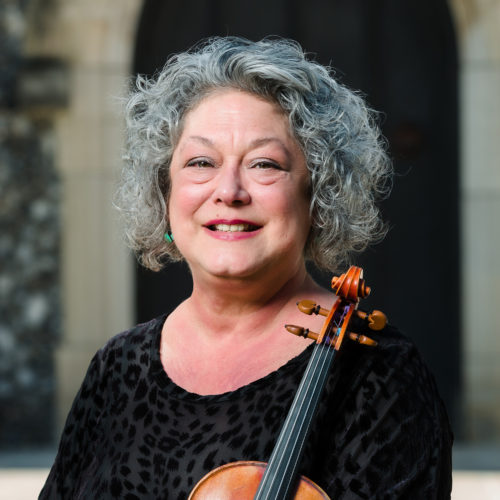
Tracy was a member of the first violin sections of the Winnipeg Symphony and Manitoba Chamber Orchestra and has served on the faculty of several Universities including Northwestern, St. Olaf College, Carleton College and North Carolina State University.


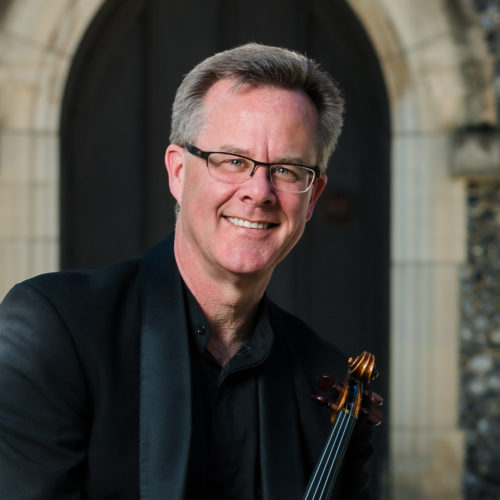
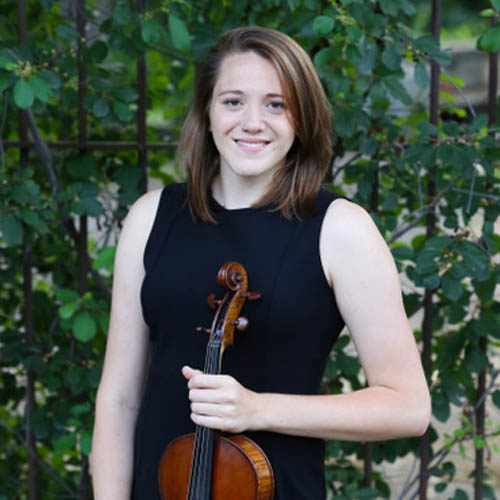
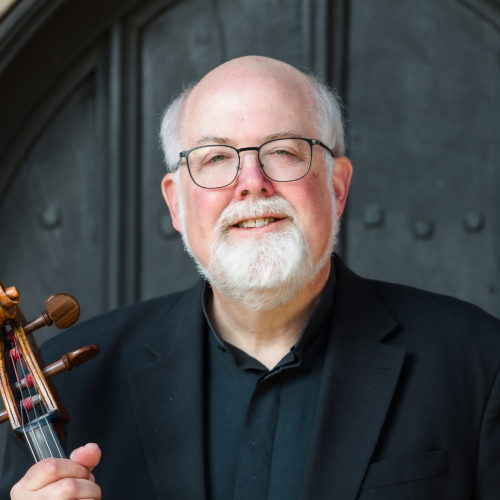
CMA Newsletter
Sign up to receive news about Belin concerts and more!
23rd Summer Season
Belin Quartet Summer Concert Series
Join us on the lawn at Salisbury House and Gardens on Tuesday evenings at 5:30 PM for free performances by the Belin Quartet.

